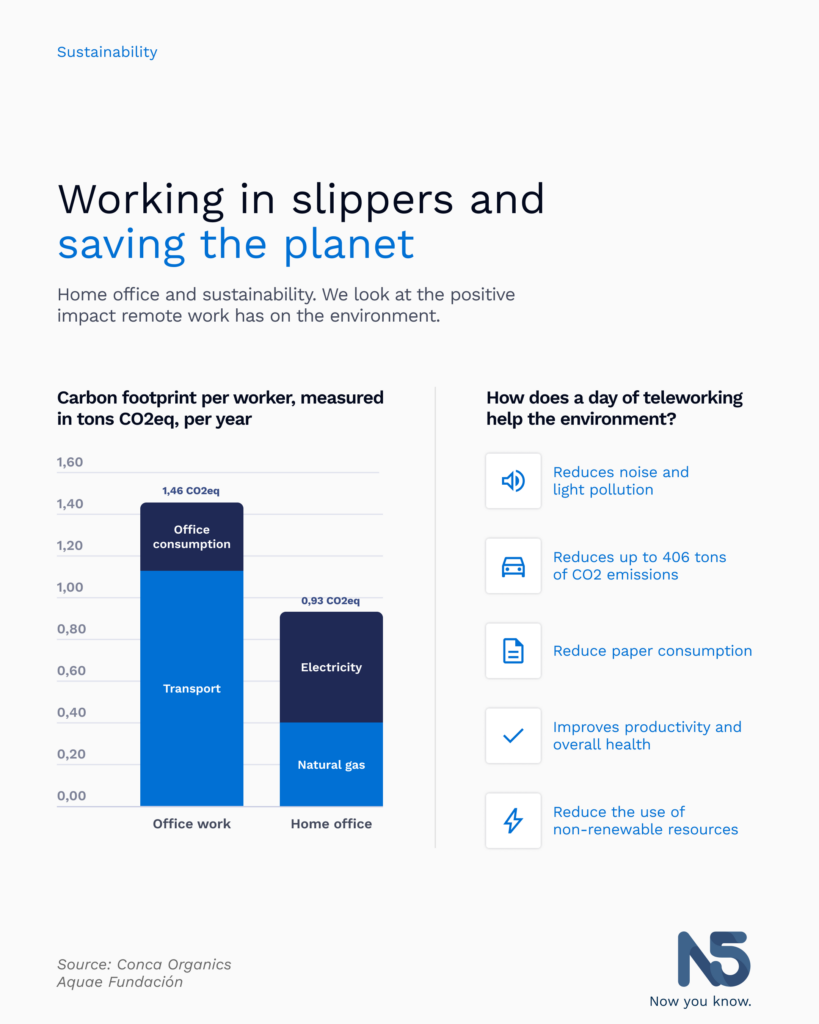
Teleworking and its impact on environmental sustainability have gained significant relevance, especially since 2020, when the remote modality became a prevailing need due to the Covid-19 pandemic.
Faced with the urgency of ensuring work continuity safely, many organizations have adopted this work-from-home practice.
According to a study released by Greenpeace, it is revealed that the transport industry is the main emitter of carbon dioxide, which contributes to deteriorated air quality in urban areas.
Reduction of greenhouse gas emissions, the main benefit of the home office. The teleworking modality emerges as a promising solution by reducing the need for daily commuting in private vehicles, especially those that run on fossil fuels such as diesel or gasoline. As a result, a significant reduction in the consumption of these fuels is achieved and, therefore, in greenhouse gas emissions.
However, when evaluating the sustainability and CO2 emissions associated with teleworking, it is essential to consider not only the transport aspect, but also the emissions derived from the operation of the office or work space at home.
Various studies based on average consumption data in homes, offices and worker mobility have revealed that working from home generates a carbon footprint of approximately 0.94 tons of CO2 eq per worker and year, compared to the emissions associated with work from an office, which reach around 1.46 tons of CO2 eq.
This represents an increase of 57%. Although emissions per worker may be higher in the home environment (due to distribution among multiple workers), the elimination of commuting makes telecommuting a more favorable option from an environmental perspective.
In summary, teleworking not only offers benefits in terms of job security and continuity, but also plays a crucial role in reducing greenhouse gas emissions. By adopting this modality, you contribute to mitigating the negative impact of transportation on the environment, thus promoting sustainability and protecting the planet.

